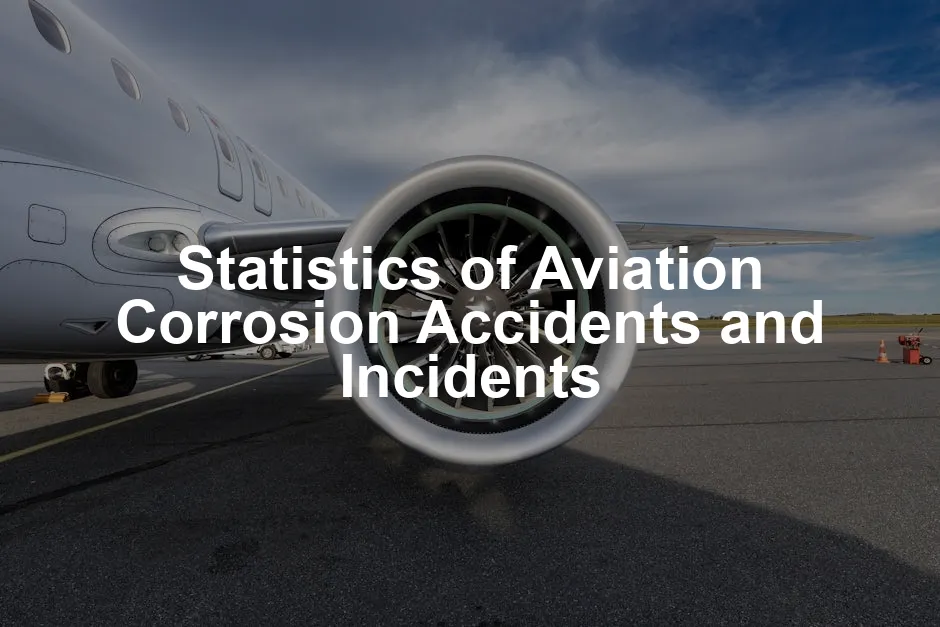Introduction
Aviation corrosion is a silent yet significant culprit in the aviation industry. It occurs when metals, like aluminum and steel, react with their environment, leading to deterioration. This deterioration can compromise aircraft safety, impact performance, and escalate maintenance costs. In fact, corrosion is estimated to account for 10-25% of structural failures in aircraft. As aircraft age, the risk of corrosion-related incidents increases, particularly for those over 20 years old, which represent about 25% of commercial aircraft. The potential risks associated with corrosion are alarming. A corroded component may fail, leading to catastrophic accidents. For instance, the infamous Aloha Airlines Flight 243 incident in 1988, where a section of the fuselage ruptured due to metal fatigue and corrosion, resulted in one fatality and numerous injuries. This incident underscores the serious safety implications of corrosion. Moreover, the economic impact of corrosion is staggering. The Department of Defense alone spends over $23 billion annually on corrosion control, with approximately $7 billion considered preventable. These figures highlight the importance of understanding and addressing corrosion in aviation. For those looking to dive deeper into the intricacies of aviation maintenance, the Aviation Maintenance Technician Handbook – General is a must-read. It provides essential knowledge and practices that can help mitigate corrosion issues and enhance safety protocols.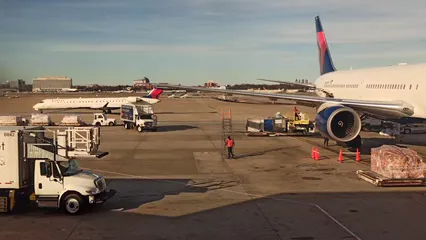
Understanding Aviation Corrosion
Definition of Corrosion
Corrosion is the gradual destruction of materials, often metals, due to chemical reactions with their environment. In aviation, corrosion can occur in various forms, each with specific characteristics. One common type is pitting corrosion, where small cavities form in a metal surface. This form is particularly insidious, as it often remains hidden until significant damage occurs. Another type is galvanic corrosion, which happens when two different metals are in contact in the presence of an electrolyte, like saltwater. This interaction can lead to accelerated corrosion of one of the metals. Lastly, stress corrosion cracking (SCC) is a critical concern. This type occurs under tensile stress in a corrosive environment, leading to unexpected failures. Each type of corrosion presents unique challenges in aircraft maintenance and safety. For instance, pitting corrosion can weaken structural integrity without visible signs, making regular inspections vital. Understanding these forms of corrosion is essential for developing effective strategies to combat them and ensuring the safety and longevity of aircraft. In conclusion, aviation corrosion is a multifaceted issue that requires ongoing attention. By recognizing its various forms and implications, the aviation industry can implement better preventative measures, ultimately enhancing safety and reducing economic burdens associated with corrosion-related incidents.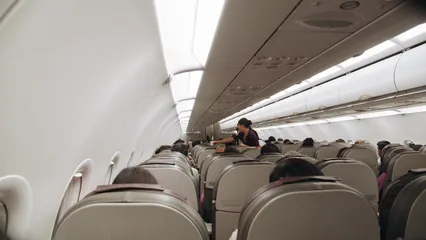
The Impact of Corrosion on Aviation Safety
Correlation Between Corrosion and Aviation Incidents
Corrosion is a significant threat to aviation safety, with many incidents tied directly to this silent adversary. According to aviation safety organizations, corrosion-related accidents account for a troubling percentage of aviation incidents. For instance, data from the National Transportation Safety Board (NTSB) reveal that corrosion is implicated in approximately 10-25% of all structural failures in aircraft. This translates to alarming numbers: hundreds of incidents each year can be traced back to corrosion-related issues. One of the most notable examples is Aloha Airlines Flight 243. In 1988, this Boeing 737-200 experienced a catastrophic failure when a section of its fuselage was compromised due to metal fatigue and corrosion. Tragically, this led to the ejection of a flight attendant and injuries to several passengers. The investigation revealed that the aircraft had been subjected to a corrosive environment, exacerbating pre-existing structural issues. Another significant case is China Airlines Flight 611, which tragically crashed in 2002 due to a fatigue crack in the fuselage. This failure was also linked to corrosion. The plane disintegrated over the Taiwan Strait, resulting in the loss of all 225 people on board. Investigators pointed to inadequate maintenance and failure to detect corrosion as critical factors in this disaster. Furthermore, an analysis conducted by the FAA indicates that the average age of aircraft involved in corrosion-related incidents is over 20 years. As aircraft age, their vulnerability to corrosion increases, making proactive maintenance and inspection essential. Approximately 25% of commercial aircraft in operation today belong to this age group, highlighting the importance of addressing corrosion in aging fleets. Statistics also show that corrosion often leads to significant economic costs. The Department of Defense spends over $23 billion annually on corrosion control, with a considerable portion of this amount deemed preventable. Delays and unexpected repairs due to corrosion can cost airlines millions and affect overall operational efficiency. Furthermore, legal repercussions from accidents can escalate these financial burdens, putting additional pressure on airlines and manufacturers. If you’re interested in learning more about corrosion control, the Corrosion Control: A Practical Guide for Aircraft Maintenance is an excellent resource that provides insights on best practices and strategies for maintaining aircraft integrity. The aviation community must adopt a more rigorous approach to corrosion management. Regular inspections and maintenance can significantly reduce the risks associated with corrosion. Implementing advanced materials and technologies can also help mitigate these risks. Ultimately, a proactive stance against corrosion not only enhances safety but also protects the economic interests of the aviation industry. In summary, the correlation between corrosion and aviation incidents is evident through historical examples and current statistics. The implications of ignoring this issue are severe, as demonstrated by catastrophic accidents. To ensure the safety and reliability of aircraft, the aviation industry must prioritize corrosion prevention and control measures, recognizing that the cost of inaction can be far greater than the investment in proactive maintenance strategies.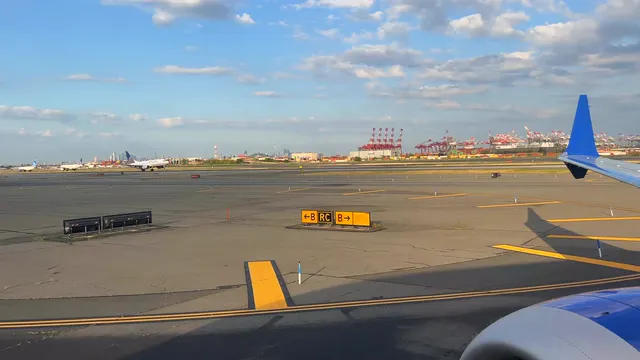
Case Studies
Corrosion-related incidents in aviation often serve as cautionary tales. Let’s analyze a couple of significant cases that reveal the hidden dangers of corrosion. One of the most infamous examples is Aloha Airlines Flight 243. In 1988, this Boeing 737-200 suffered a catastrophic failure when a section of its fuselage ruptured mid-flight. The cause? A deadly combination of metal fatigue and corrosion accelerated by exposure to salt-laden air. The unfortunate result was one fatality and several injuries. This incident highlighted how corrosion could silently compromise structural integrity, ultimately leading to devastating consequences. Another notable case is China Airlines Flight 611, which tragically crashed in 2002. The Boeing 747-200 disintegrated over the Taiwan Strait due to a fatigue crack in the fuselage, linked to corrosion. All 225 passengers and crew members aboard lost their lives. The investigation revealed that inadequate maintenance practices had failed to address corrosion issues, showcasing a glaring deficiency in safety protocols. These incidents teach us several valuable lessons. First, corrosion is not just a maintenance nuisance; it’s a potential killer. Regular inspections must go beyond the surface level to detect hidden corrosion. Engineers and maintenance crews need to stay vigilant, particularly with aging aircraft. Moreover, the economic implications of such accidents can be staggering. Not only do airlines face legal repercussions and compensation claims, but the negative publicity can tarnish reputations and lead to a loss of customer trust. The aviation industry must learn from these harrowing tales. Implementing rigorous maintenance schedules, utilizing advanced technologies for corrosion detection, and fostering a culture of safety can mitigate these risks. As we continue to see the aging of fleets, proactive measures are essential to prevent corrosion-related incidents and ensure the safety of passengers and crew alike.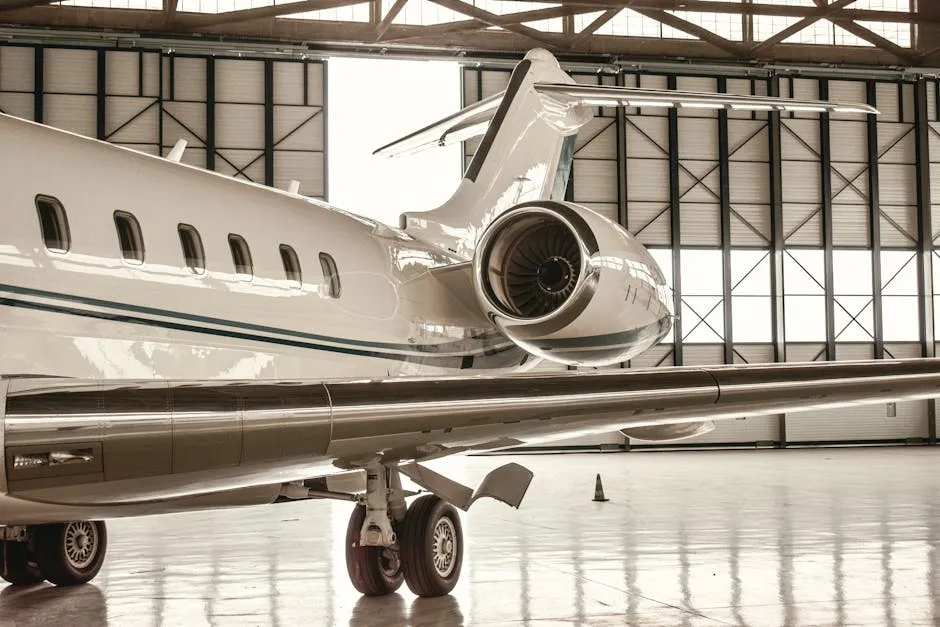
Economic Implications of Aviation Corrosion
Direct and Indirect Costs
Corrosion isn’t just a pesky problem; it comes with a hefty price tag. The financial impact of corrosion on aircraft maintenance and operations is significant. Airlines face direct costs associated with corrosion control, including special cleaning, repair, and component replacements. A study revealed that the U.S. Department of Defense allocates over $23 billion annually for corrosion control. Shockingly, about $7 billion of this expenditure is considered preventable. This statistic alone underscores the urgent need for effective corrosion management strategies in both military and civilian aviation. Direct costs associated with aircraft corrosion often manifest in regular maintenance and unscheduled repairs. Airlines must invest in specialized cleaning techniques and materials to combat corrosion, which can skyrocket maintenance budgets. Imagine the frustration of airlines when a small patch of corrosion leads to extensive repairs, resulting in grounded planes and lost revenue. Indirect costs can be just as damaging. Corrosion can lead to operational delays, affecting flight schedules and passenger satisfaction. The ripple effect of a grounded aircraft due to corrosion can lead to a chain reaction of cancellations and rescheduling. This not only frustrates travelers but can also tarnish an airline’s reputation. Moreover, legal repercussions from accidents attributed to corrosion can escalate these financial burdens. Airlines may face lawsuits, compensation claims, and increased insurance premiums. The financial impact extends beyond immediate costs, affecting long-term profitability and operational efficiency. In conclusion, the economic implications of aviation corrosion are substantial. Airlines must prioritize corrosion prevention and mitigation strategies to avoid falling into the costly cycle of maintenance and repairs. By investing in effective corrosion management, the aviation industry can protect its bottom line while ensuring the safety and reliability of air travel. For a comprehensive overview of aviation maintenance procedures, check out Aviation Maintenance Procedures. This book provides a detailed examination of various maintenance practices essential for combating corrosion and ensuring aircraft safety.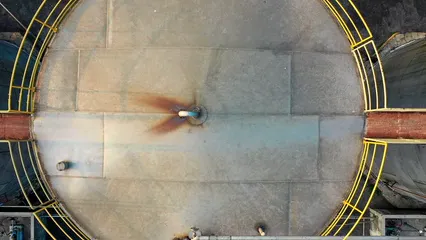
Current Statistics on Aviation Corrosion Incidents
Overview of Accident and Incident Statistics
Aviation corrosion is a critical issue, causing significant safety concerns and economic impacts within the industry. Recent statistics from organizations such as the European Union Aviation Safety Agency (EASA), the International Air Transport Association (IATA), and the Federal Aviation Administration (FAA) paint a clear picture of how corrosion affects aviation safety. According to EASA’s Annual Safety Review, corrosion-related incidents constitute about 10-25% of all structural failures across various aircraft types. The FAA reports that corrosion is linked to over 200 incidents annually, underscoring its prevalence in the aviation sector. These statistics reveal that corrosion isn’t just a minor annoyance but a major player in aviation safety. Breaking down these incidents by aircraft type reveals some interesting trends. Older commercial aircraft, particularly those over 20 years old, are at an increased risk for corrosion-related issues. Approximately 25% of the commercial aircraft fleet falls into this age bracket. This age group correlates strongly with corrosion incidents, as older aircraft often lack the advanced materials and protective coatings found in newer models. The operational environment also plays a significant role in corrosion susceptibility. Aircraft operating in humid, salty, or industrially polluted areas face higher corrosion rates. For instance, military aircraft stationed near coastal regions are subject to harsher corrosion conditions than those operating inland. A study indicated that aircraft in maritime environments experience corrosion rates three times higher than their inland counterparts. When we examine the statistics by aircraft type, we see that aluminum aircraft, including the Boeing 737 and Airbus A320 families, are particularly vulnerable to corrosion. These aircraft account for a substantial portion of the global fleet. Statistics show that corrosion incidents in these models are rising, largely due to their widespread use and age. Moreover, the statistics show a concerning trend where corrosion-related incidents have increased by approximately 15% over the last decade. This rise can be attributed to the aging fleet and inadequate maintenance practices. The need for improved inspection techniques and maintenance protocols is clear. In terms of economic impact, corrosion-related incidents cost the aviation industry millions each year. The FAA estimates that corrosion management and control measures are essential, with airlines spending an average of $1 million annually on corrosion prevention for each aircraft. This figure highlights the financial burden corrosion imposes on airlines, manufacturers, and ultimately, passengers. To summarize, the statistics reveal a clear narrative: corrosion is a significant and growing concern in aviation. The data from EASA, IATA, and FAA highlight the need for proactive approaches to maintenance and inspection. As the aviation industry continues to evolve, addressing corrosion will be crucial to ensuring the safety and longevity of aircraft while minimizing economic impacts. For those seeking to understand the broader implications of aviation safety, Aviation Safety and Security: A Systems Perspective is an insightful read that delves into the complexities of aviation safety management.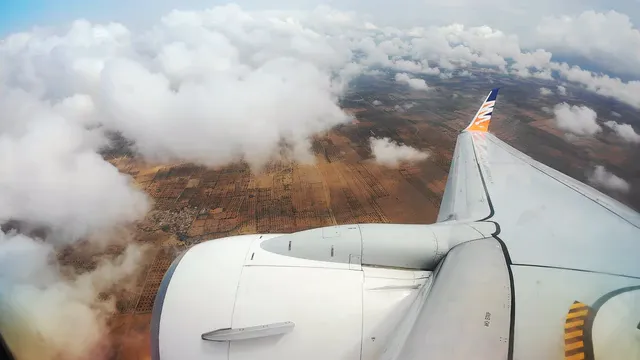
Trends Over Time
Corrosion-related incidents in aviation have seen a troubling rise over the years. Historically, as aircraft age, the frequency and severity of corrosion incidents increase. For instance, data from aviation safety organizations indicate that corrosion has been implicated in 10-25% of all structural failures. This is alarming, especially considering that around 25% of commercial aircraft currently in operation are over 20 years old, making them particularly susceptible to corrosion. The implications of aging aircraft fleets are significant. As these aircraft accumulate flight hours, they endure exposure to various environmental factors that accelerate corrosion, such as humidity, salt, and pollution. The longer an aircraft is in service, the more likely it is to experience corrosion-related issues. This trend emphasizes the crucial need for vigilant maintenance practices, especially for older models. In summary, the increasing prevalence of corrosion incidents is a wake-up call for the aviation industry. Stakeholders must prioritize effective corrosion management strategies to ensure safety and maintain operational efficiency.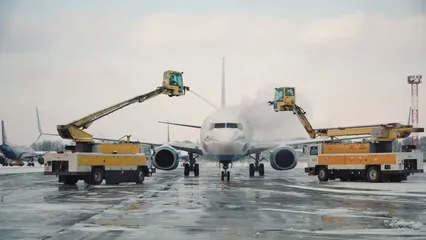
Preventative Measures and Best Practices
Maintenance Practices
Regular inspections are the cornerstone of effective corrosion management. They allow for the early detection and mitigation of corrosion before it escalates into serious safety risks. Maintenance practices should include thorough visual inspections, non-destructive testing, and routine cleaning. Best practices for cleaning aircraft to prevent corrosion involve meticulous attention to detail. For example, aircraft exposed to saltwater environments should be cleaned frequently. The U.S. Navy recommends cleaning every seven days at sea and every 14 days when on land. This not only removes corrosive agents but also significantly enhances fuel efficiency. Another vital aspect is ensuring that aircraft are stored properly. Hangaring and using protective covers can shield them from harsh environmental conditions, which are prime contributors to corrosion. Implementing these practices will help mitigate the risk of corrosion and extend the lifespan of aircraft. To further enhance your understanding of aircraft maintenance, consider reading Aircraft Maintenance and Repair (Book). It’s an excellent resource for anyone looking to deepen their knowledge of aviation maintenance practices.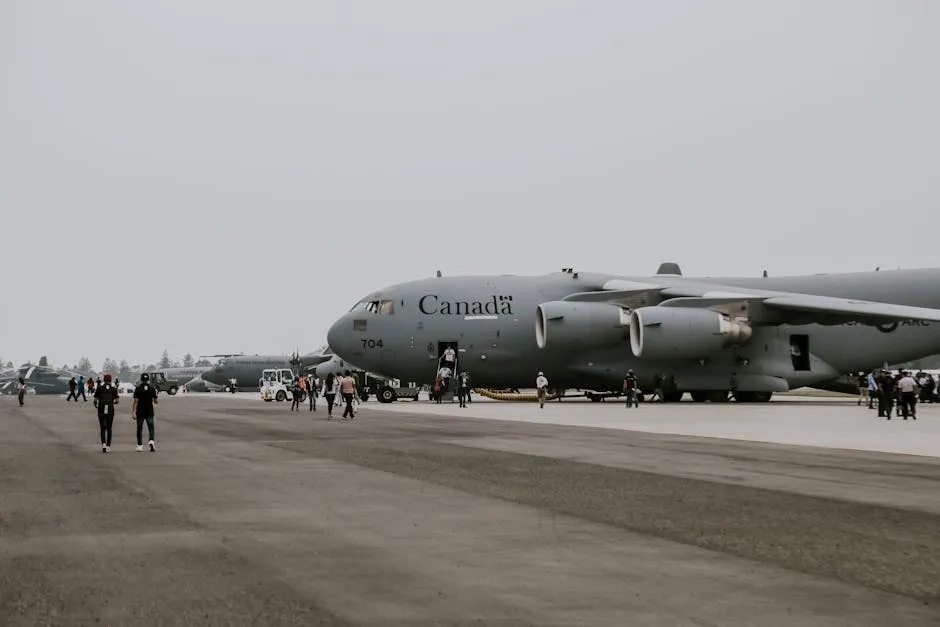
Innovative Technologies
Innovation in corrosion detection technologies plays a pivotal role in aviation safety. Non-destructive testing methods, such as ultrasonic and eddy current techniques, enable maintenance teams to identify hidden corrosion without damaging the aircraft. These technologies have advanced significantly, allowing for more precise inspections and quicker responses. Materials science also contributes to combating corrosion. The aviation industry is increasingly adopting corrosion-resistant materials in aircraft design. For instance, the use of advanced composites and protective coatings has proven effective in reducing corrosion rates. Such innovations not only enhance the durability of aircraft but also promote long-term safety. Moreover, implementing automated inspection systems can streamline the maintenance process. Drones equipped with advanced imaging technologies can conduct inspections in hard-to-reach areas, ensuring thorough evaluations. This proactive approach to maintenance can lead to earlier detection of corrosion, minimizing risks associated with aging aircraft fleets. In summary, integrating regular maintenance practices with innovative technologies is essential for corrosion prevention in aviation. By prioritizing these strategies, stakeholders can enhance safety, reduce operational costs, and ensure the longevity of aircraft.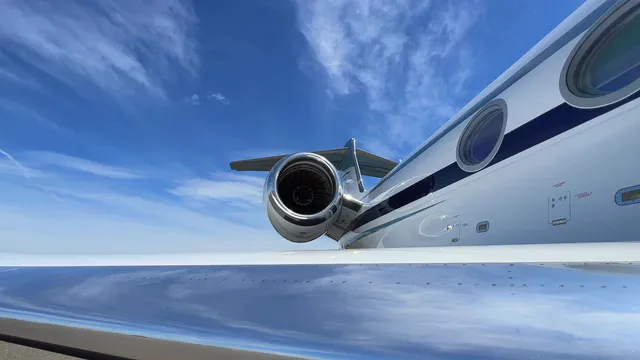
Conclusion
In conclusion, the statistics surrounding aviation corrosion accidents and incidents reveal a pressing issue that demands immediate attention. The correlation between aging aircraft and increased corrosion risks highlights the necessity for robust maintenance practices. It is crucial for stakeholders to prioritize ongoing research and improvements in these practices to enhance aviation safety. Additionally, the financial implications of corrosion are significant. Airlines can reduce costs associated with maintenance and accidents by investing in effective corrosion management strategies. Ultimately, a proactive approach to corrosion prevention will not only safeguard lives but also protect the economic interests of the aviation industry. Stakeholders must unite in prioritizing corrosion prevention and control measures. By fostering a culture of safety and innovation, the aviation industry can continue to thrive while ensuring the safety and reliability of air travel.Understanding the statistics of aviation corrosion is crucial for enhancing safety measures in the industry. statistics of aviation corrosion accident and incident
For those who are always on the go, don’t forget to check out the Portable Power Bank Charger to keep your devices charged during your travels!
Please let us know what you think about our content by leaving a comment down below!
Thank you for reading till here 🙂
All images from Pexels

